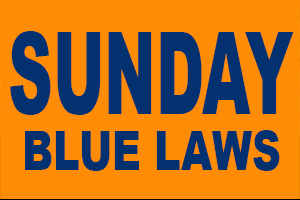

The British Empire and Slavery
By John Simkin
© September 1997 (updated January 2017).
At the end of the 14th century Europeans started to take people from Africa against their will. Initially they were mainly used as servants for the rich. The Europeans justified the taking of slaves by arguing that they were providing an opportunity for Africans to become Christians. The Spanish were the first Europeans to become involved in the slave-trade. However, in 1563 Francis Drake joined his cousin, John Hawkins, on a voyage to Africa. The two men started capturing people in Sierra Leone and selling them as slaves to Spanish settlers in the Caribbean. As it was illegal for the settlers to buy from foreigners, Hawkins and Drake soon came into conflict with the Spanish authorities. (1)
When Spanish and Portuguese sea-captains began to explore the Americas they took their African servants with them. Some of these Africans proved to be excellent explorers. The most important of these was Estevanico, who led the first European expedition to New Mexico and Arizona.
The people living in the Americas resisted the attempt by the Europeans to take over their land. One of the most important struggles took place in Cuba in 1512. Resistance was led by Hatuey. According to Bartolomé de Las Casas Hatuey claimed: "They tell us, these tyrants, that they adore a God of peace and equality, and yet they usurp our land and make us their slaves. They speak to us of an immortal soul and of their eternal rewards and punishments, and yet they rob our belongings, seduce our women, violate our daughters. Incapable of matching us in valor, these cowards cover themselves with iron that our weapons cannot break." (2)
Diego Velázquez eventually suppressed the rebellion. He captured Hatuey and he was executed on 2nd February, 1512. It is estimated that over a million people lived in Cuba before the arrival of the Europeans. Twenty-five years later there were only 2,000 left. Large numbers had been killed, while others died of starvation, disease, committed suicide or had died from the consequences of being forced to work long hours in the gold mines. (3)
After the arrival of the Europeans there was a sharp decline in the local population of most of the islands in the Caribbean Sea. This created a problem for the Europeans as they needed labour to exploit the natural resources of these islands. Eventually the Europeans came up with a solution: the importation of slaves from Africa. By 1540, an estimated 10,000 slaves a year were being brought from Africa to replace the diminishing local populations.
According to Suzanne Schwarz, the author of Slave Captain: The Career of James Irving in the Liverpool Slave Trade (1995): "This sophisticated trade in human cargo was global and international, involving all the maritime powers in Europe, from Spain and Portugal to France, England, Holland, Denmark, Sweden, Norway, and even Brandenburg. Some 37,000 slaving voyages cleared from ports of the Atlantic littoral between the early sixteenth and the midnineteenth century and, collectively, they transported an estimated eleven million individuals from Africa." (4)
Royal African Company
In 1672, Charles II gave the Royal African Company (RAC) the monopoly of the trade to supply slaves to the British colonies for the next 1,000 years. The British built coastal forts in Africa where they kept the captured Africans until the arrival of the slave-ships. The merchants obtained the slaves from African chiefs by giving them goods from Europe. At first, these slaves were often the captured soldiers from tribal wars. However, the demand for slaves become so great that raiding parties were organised to obtain young Africans.
Over the next 20 years the company exported over 90,000 slaves to the Americas. In the 18th century Britain was mainly interested in Africa as a source of slaves. After a large number of petitions from merchants and manufacturers, the RAC lost its monopoly to provide slaves to the British Empire in 1698. They now opened up the business to independent companies but had to pay high taxes to the British government. This gave them rights to the infrastructure of the RAC. This included the coastal forts where they kept the captured Africans until the arrival of the slave-ships. Between 1698 and 1797, the new companies carried 75,000 slaves, compared to the 18,000 carried by the RAC. (5)
It was estimated in 1796 that "every year about 72,000 slaves are carried from Africa to the West Indies... the Danes carry away about 3,0000, the Dutch 7,000, the French 18,000, the Portuguese 8,000, the English have all the rest." Over 85% of the Africans exported were carried in British ships. Most of these were based in Liverpool. It was reported in 1790 that the goods used to buy slaves from this area included guns, gunpowder, textiles, iron bars and brandy. Other popular items traded included copper, brass and pewter goods.
Treatment of Slaves
In 1784 William Dillwyn published The Case of our Fellow Creatures, the Oppressed Africans. Dillwyn claimed that the slave-trade encouraged wars between the different tribal groups in Africa: "This traffic is the principal source of the destructive wars which prevail among these unhappy people, and is attended with consequences, the mere recital of which is shocking to humanity. The violent reparation of the dearest relatives, the tears of conjugal and parental affection, the reluctance of the slaves to a voyage from which they can have no chance of returning, must present scenes of distress which would pierce the heart of any, in whom the principles of humanity are not wholly effaced. This, however, is but the beginning of sorrows with the poor captives." (6)
Hugh Crow, the captain of The Elizabeth, arrived at Annamaboe in December, 1790. Crow later recalled: "We came to anchor at Annamaboe in December, 1790, after a passage of seven weeks. We lay there about three weeks without transacting any trade, the king of that part of the coast having died some time before, in consequence of which all business was suspended. According to a barbarous custom of the country on occasion of the decease of a prince twenty-three of his wives were put to death while we remained; and many no doubt had met with a similar fate before our arrival." (7)
Alexander Falconbridge, was a surgeon on board a slave ship. He wrote in 1790: "When the negroes whom the black traders have to dispose of are shown to the European purchasers, they first examine them relative to age. They then minutely inspect their persons, and inquire into their state of health; if they are afflicted with any infirmity, or are deformed, or have bad eyes or teeth; if they are lame, or weak in the joints, or distorted in the back, or of a slender make, or are narrow in the chest; in short, if they have been afflicted in any manner so as to render them incapable of such labour they are rejected. The traders frequently beat those negroes which are objected to by the captains. Instances have happened that the traders, when any of their negroes have been objected to have instantly beheaded them in the sight of the captain." (8)
James Irving was the captain of the slave-ship, The Ellen, that was based in Liverpool. Irving wrote to his parents on 2nd January 1791: "We have been very busy loading the vessel.... We are bound for Annamaboe in the Gold Coast, discharge what goods we have for that price and set sail from it again within 48 hours after we arrived. Then we are to call at Lagos, Accra and other parts whose name I have forget. We are then to go down as far as Benin River and stay a day or two and then go back to Anomabo from which place we are to sail for the West Indies." The arrived at Annamaboe on 5th April 1791, before moving onto Lagos and Accra. While on the Gold Coast Irving purchased 341 Africans, eighty-eight of whom were transferred to other ships. (9)
John Newton was a slave-captain between 1747 and 1754. He wrote in Thoughts upon the African Slave Trade (1787): "The slaves, in general, are bought, and paid for. Sometimes, when goods are lent, or trusted on shore, the trader voluntarily leaves a free person, perhaps his own son, as a hostage, or pawn, for the payment; and, in case or default, the hostage is carried off, and sold; which, however hard upon him, being in consequence of a free stipulation, cannot be deemed unfair. There have been instances of unprincipled captains, who, at the close of what they supposed their last voyage, and when they had no intention of revisiting the coast, have detained, and carried away, free people with them; and left the next ship, that should come from the same port, to risk the consequences. But these actions, I hope, and believe, are not common." (10)
Explorers gave details of how the system worked. Mungo Park witnessed the taking of slaves from Africa. "The slaves are commonly secured by putting the right leg of one, and the left of another into the same pair of fetters. By supporting the fetters with string they can walk very slowly. Every four slaves are likewise fastened together by the necks. They were led out in their fetters every morning to the shade of the tamarind tree where they were encouraged to sing diverting songs to keep up their spirits; for although some of them sustained the hardships of their situation with amazing fortitude, the greater part were very much dejected, and would sit all day in the sort of sullen melancholy with their eyes fixed upon the ground." (11)
The merchants obtained the slaves from African chiefs by giving them goods from Europe. At first, these slaves were often the captured soldiers from tribal wars. However, the demand for slaves become so great that raiding parties were organised to obtain young Africans. Ottobah Cugoano was a 13 year-old boy from Ghana when he was captured by slave traders: "I was snatched away from my native country, with about eighteen or twenty more boys and girls, as we were playing in a field. We lived but a few days' journey from the coast where we were kidnapped... Some of us attempted, in vain, to run away, but pistols and cutlasses were soon introduced, threatening, that if we offered to stir, we should all lie dead on the spot." (12)
Olaudah Equiano was living in an Igbo village in the kingdom of Benin in 1756: "One day, when all our people were gone out to their works as usual, and only I and my dear sister were left to mind the house, two men and a woman got over our walls, and in a moment seized us both; and, without giving us time to cry out, or make resistance, they stopped our mouths, and ran off with us into the nearest wood. Here they tied our hands, and continued to carry us as far as they could, till night came on, when we reached a small house, where the robbers halted for refreshment, and spent the night. We were then unbound; but were unable to take any food; and, being quite overpowered by fatigue and grief, our only relief was some sleep, which allayed our misfortune for a short time. The first object which saluted my eyes when I arrived on the coast, was the sea, and a slave ship, which was then riding at anchor, and waiting for its cargo. These filled me with astonishment, which was soon converted into terror, when I was carried on board. I was immediately handled, and tossed up to see if I were sound, by some of the crew." (13)
It is estimated that up to 15 million Africans were transported to the Americas between the sixteenth and nineteenth centuries. (14) To maximize their profits slave merchants carried as many slaves as was physically possible on their ships. By the 17th century slaves could be purchased in Africa for about $25 and sold in the Americas for about $150. Even with a deathrate of 50 per cent, merchants could expect to make tremendous profits from the trade. The Liverpool merchant William Davenport reported that some voyages gave him a profit of as much as 147% on his investment. (15)
Working on a slave-ship could also be very profitable. James Irving was a surgeon on the ship Vulture that sailed to Jamaica in November 1782. It has been argued by Suzanne Schwarz, the author of Slave Captain: The Career of James Irving in the Liverpool Slave Trade (1995): "Assuming that Irving was paid £4 wages a month, together with the value of two privilege slaves and one shilling head money for each of the 592 slaves delivered alive to the West Indies, it is likely that Irving earned approximately £140 from this voyage. This is consistent with the average voyage earnings of slave-ship surgeons in the late eighteenth century, which were typically between £100 and £150." (16)
The conditions on board the slave-ships were so appalling that rebellious slaves had to be punished very severely. Thomas Phillips, a slave-ship captain, wrote an account of his activities in A Journal of a Voyage (1746): "I have been informed that some commanders have cut off the legs or arms of the most willful slaves, to terrify the rest, for they believe that, if they lose a member, they cannot return home again: I was advised by some of my officers to do the same, but I could not be persuaded to entertain the least thought of it, much less to put in practice such barbarity and cruelty to poor creatures who, excepting their want of Christianity and true religion (their misfortune more than fault), are as much the works of God's hands, and no doubt as dear to him as ourselves." (17)
Thomas Trotter, a physician working on the slave-ship, Brookes, told a House of Commons committee in 1790: "The slaves that are out of irons are locked spoonways and locked to one another. It is the duty of the first mate to see them stowed in this manner every morning; those which do not get quickly into their places are compelled by the cat and, such was the situation when stowed in this manner, and when the ship had much motion at sea, they were often miserably bruised against the deck or against each other. I have seen their breasts heaving and observed them draw their breath, with all those laborious and anxious efforts for life which we observe in expiring animals subjected by experiment to bad air of various kinds." (18) It has been estimated that the mortality rate of Africans on board British ships was 13 per cent. (19)
Church of England and Slavery
The Church of England gave its full support to the British slave trade. Its leading clergy had stated its position on a number of occasions. Reference was made to St Paul who suggested that slaves serve their masters "with fear and trembling". It was argued that what St Paul meant was that "liberty could only be expected in the next world." (20)
Another source often quoted was The City of God, a book of Christian philosophy written in Latin by Augustine of Hippo (later St. Augustine) in the early 5th century AD. According to Augustine, "by preserving the institution of slavery mankind could be disciplined and his selfaggrandisement corrected; and because no man was innocent, it was God's will alone who should be master and who should be a slave". (21)
In 1778, the Reverend Raymond Harris produced a wealth of scriptural evidence to support his contention that slavery, and particularly slavery of blacks, was in accordance with the word of God. He used several passages from the Old Testament that suggested God approved of slavery. He also used the New Testament to support his view of slavery. Harris quoted from Christ's Sermon on the Mount as the basis for his argument that Christianity recognised the existing systems and institutions. "Think not that I am come to destroy the Law of the Prophets; I am not come to destroy but to fulfil." (22)
The Church of England also owned a large number of slaves. Its missionary arm, the Society for the Propagation of the Gospel, were active in those areas where there were slave populations. Some wealthy slave owners, left them to the church when they died. Christopher Codrington, who owned a plantation in Barbados, and in a good year made a profit of £2,000 - roughly £265,000 in today's money. Codrington left 750 slaves to the Church. Soon afterwards the words "SOCIETY" was burned onto the chests of slaves with a red-hot iron. (23)
In February 1766, William Warburton, the Bishop of Gloucester, made the first denunciation of the slave trade by a member of the Established Church when he complained that these bequeaths resulted in the Church becoming "innocent partakers of the fruits of this iniquitous traffic". (24) Despite this comment the plantation had one of the worst records in the Caribbean, with the death-rate being about five-sixths the birth-rate." (25)
Anti-Slavery Movement
Opposition to slavery mainly came from the Nonconformist religions. George Fox, the leader of the Society of Friends (Quakers), visited Jamaica in 1671. He encountered African slaves for the first time and responded by condemning the institution of slavery. As a result Quaker settlements in North America abhorred slavery and many took every opportunity to speak out at the injustices of the system and of the means of transportation bringing them to the New World. (26)
John Wesley, the leader of the Methodists, also opposed slavery. In his pamphlet, Thoughts Upon Slavery (1744) he argued: "I absolutely deny all slave holding to be consistent with any degree of even natural justice... Give liberty to whom liberty is due, that is to to every child of man, to every partaker of human nature. Let none serve you but by his own act and deed, by his own voluntary choice." (27)
The Unitarian movement was united in its opposition to slavery. People such as Joseph Priestley, Josiah Wedgwood, Thomas Bentley and Erasmus Darwin were all active in the anti-slavery movement. There is no set doctrinal beliefs that all Unitarians agree on. In fact, the most important aspect of Unitarianism is the right of individuals to develop their own religious opinions. Unitarians tend to believe that Jesus Christ was a human religious leader to be followed but not worshipped. Unitarians argued that Jesus is the "great exemplar which we ought to copy in order to perfect our union with God". (28)
Some members of the Church of England were opposed to the slave trade. Two of them, Granville Sharp and Thomas Clarkson established the Society for the Abolition of the Slave Trade in 1787. However, nine out of the twelve members on the committee, were Quakers. It also gained the support of political radicals such as Samuel Romilly, John Cartwright, John Horne Tooke, John Thelwall, Thomas Walker, Joseph Gales and William Smith who were also involved in the campaign for universal suffrage.
Josiah Wedgwood joined the organising committee. He urged his friends to join the organisation. Wedgwood wrote to James Watt asking for his support: "I take it for granted that you and I are on the same side of the question respecting the slave trade. I have joined my brethren here in a petition from the pottery for abolition of it, as I do not like a half-measure in this black business." (29)
As Adam Hochschild, the author of Bury the Chains: The British Struggle to Abolish Slavery (2005) has pointed out: "Wedgwood asked one of his craftsmen to design a seal for stamping the wax used to close envelopes. It showed a kneeling African in chains, lifting his hands beseechingly." It included the words: "Am I Not a Man and a Brother?" Hochschild goes onto argue that "reproduced everywhere from books and leaflets to snuffboxes and cufflinks, the image was an instant hit... Wedgwood's kneeling African, the equivalent of the label buttons we wear for electoral campaigns, was probably the first widespread use of a logo designed for a political cause." (30)
Thomas Clarkson explained: "Some had them inlaid in gold on the lid of their snuff boxes. Of the ladies, several wore them in bracelets, and others had them fitted up in an ornamental manner as pins for their hair. At length the taste for wearing them became general, and this fashion, which usually confines itself to worthless things, was seen for once in the honourable office of promoting the cause of justice, humanity and freedom." (31)
Hundreds of these images were produced. Benjamin Franklin suggested that the image was "equal to that of the best written pamphlet".Men displayed them as shirt pins and coat buttons. Whereas women used the image in bracelets, brooches and ornamental hairpins. In this way, women could show their anti-slavery opinions at a time when they were denied the vote. Later, a group of women designed their own medal, "Am I Not a Slave And A Sister?" (32)
When the Society for the Abolition of the Slave Trade was set up in 1783 it had an exclusively male organization. Some of the leaders of the anti-slavery movement such as William Wilberforce were totally opposed to women being involved in the campaign. One of Wilberforce's concerns was that women wanted to go further than the abolition of the slave trade. Early women activists such as Anne Knight and Elizabeth Heyrick were in favour of the immediate abolition of slavery, whereas Wilberforce believed that the movement should concentrate on bringing an end to the slave trade. Heyrick criticised the mainstream anti-slavery figures for their "slow, cautious, accommodating measures". (33)
In 1805 the House of Commons passed a bill that made it unlawful for any British subject to capture and transport slaves, but the measure was blocked by the House of Lords. In February 1806, Lord Grenville formed a Whig administration.
Grenville and his Foreign Secretary, Charles Fox, were strong opponents of the slave trade. Fox and William Wilberforce led the campaign in the House of Commons, whereas Grenville, had the task of persuading the House of Lords to accept the measure. Greenville made a passionate speech where he argued that the trade was "contrary to the principles of justice, humanity and sound policy" and criticised fellow members for "not having abolished the trade long ago". When the vote was taken the Abolition of the Slave Trade bill was passed in the House of Lords by 41 votes to 20. In the House of Commons it was carried by 114 to 15 and it become law on 25th March, 1807. (34)
After the passing of Abolition of the Slave Trade Act in 1807, British captains who were caught continuing the trade were fined £100 for every slave found on board. However, this law did not stop the British slave trade. If slave-ships were in danger of being captured by the British navy, captains often reduced the fines they had to pay by ordering the slaves to be thrown into the sea.
Some people involved in the anti-slave trade campaign argued that the only way to end the suffering of the slaves was to make slavery illegal. A new Anti-Slavery Society was formed in 1823. Members included Thomas Clarkson, Henry Brougham, William Wilberforce and Thomas Fowell Buxton. Although women were allowed to be members they were virtually excluded from its leadership.
Records show that about ten per cent of the financial supporters of the organisation were women. In some areas, such as Manchester, women made up over a quarter of all subscribers. On 8th April, 1825, a meeting took place at the home of Lucy Townsend in Birmingham to discuss the issue of the role of women in the anti-slavery movement. Townsend, Elizabeth Heyrick, Mary Lloyd, Sarah Wedgwood, Sophia Sturge and the other women at the meeting decided to form the Birmingham Ladies Society for the Relief of Negro Slaves (later the group changed its name to the Female Society for Birmingham). (35)
The formation of other independent women's groups soon followed. This included groups in Nottingham (Ann Taylor Gilbert), Sheffield (Mary Ann Rawson, Mary Roberts), Leicester (Elizabeth Heyrick, Susanna Watts), Glasgow (Jane Smeal), Norwich (Amelia Alderson Opie, Anna Gurney), London (Mary Anne Schimmelpenninck, Mary Foster), Darlington (Elizabeth Pease) and Chelmsford (Anne Knight). By 1831 there were seventy-three of these women's organisations campaigning against slavery. (36)
Josiah Wedgwood, Joseph Priestley, Thomas Day and Erasmus Darwin helped form the Birmingham Anti-Slavery Committee. They were attacked by several leading merchants in the city and some of them even petitioned Parliament against abolition. Priestley declared that although they supported the commercial interests, they would oppose "any commerce which always originates in violence and often terminates in cruelty". (37)
Parliament passed the Slavery Abolition Act in 1833. This act gave all slaves in the British Empire their freedom. The British government paid £20 million in compensation to the slave owners. The amount that the plantation owners received depended on the number of slaves that they had. For example, the Bishop of Exeter's 665 slaves resulted in him receiving £12,700. (38)







